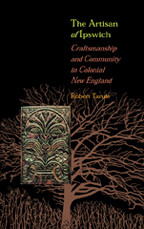
Reviews
A wonderful book. It is impressively researched, logically organized, and well written. And far more than most accounts of the colonial backcountry, it introduces real people making choices about how to construct their worlds and how to present themselves to their neighbors and friends.
By salvaging and examining the transactions of one merchant operating in the Atlantic economy of the period, [Martin] reveals much that is valuable about the world of goods and indicates several possible directions for future study.
The writing is lively and easily understandable, and the mixture of methods used to study the accounts of Hook and the vast variety of topics addressed result in a book that would have broad appeal to antique and historic house enthusiasts, re-enactors and local historians.
The best study we have to date of early American consumerism.
An important contribution to the study of consumption in early America that also provides wonderful insight into the significant role of objects in illuminating the past.
This is a book that quite forcefully offers an interdisciplinary analysis based on the abilities of the art historian and the economic historian, a person at ease with artifacts and dusty will books and skilled at describing local vernacular architecture and long-distance consumer behavior. It joins the list of must-read books for anyone interested in economic behavior and consumer practices in the early modern Atlantic basin.
Exceptional. An analytical model that will advance the field of material culture.
An impressive example of what thinking in multidisciplinary ways about the uses and meaning of material culture can reveal about past lives... Martin has melded several approaches to her subject to great effect, and this work will be incredibly useful not only to those interested in the eighteenth-century Virginia backcountry, but also to any historical scholar who wishes to understand consumerism and its relationship to things and individual identity.
Book Details
Series Editor's Foreword
Preface
Introduction: In Backcountry Time
1. The Business of Revolutions: John Hook and the Atlantic World
William Mead's Scottish Clock
2. Getting the Goods: Local Acquisition in
Series Editor's Foreword
Preface
Introduction: In Backcountry Time
1. The Business of Revolutions: John Hook and the Atlantic World
William Mead's Scottish Clock
2. Getting the Goods: Local Acquisition in a Tobacco Economy
The Iron Plate
3. Accounting for Life: Objects, Names, and Numbers
The Ledger
4. Living the Backcountry: Styles and Standards
The Wade Cabin in Backcountry Time
5. Setting the Stage, Playing the Part: Stores as Shopping Spaces
Ribbons of Desire
6. Suckey's Looking Glass: African Americans as Consumers
Mirrors and Meanings
Epilogue: Country Gentleman in a New Country: John Hook's Beef
Notes
Essay on Sources
Index





